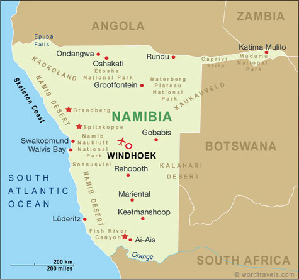
This fact sheet reports the case of a uranium mine worker in Namibia who suffered health damages about two decades ago, and his legal battle against one of the largest mining groups in the world.
Factual Background
At present, Namibia occupies the fourth position in the global market of uranium production, with an export of about 5,200 tons of uranium oxide in 2010. Two uranium mines are currently operating and a third one is planned to start in 2013. Since the first uranium mine was started by Rio Tinto in 1976, this sector has expanded considerably and it continues to do so. A total of 66 exclusive exploration licenses (EPL) and five mining license have been granted by the Ministry of Mines & Energy.
Uranium mining is bringing many health, environmental and socio-economic problems to the country. Important diseases such as as cancer have been detected in mine workers and residents. Most of these health problems originated in the initial stages when no safety measures were taken by the companies. As to the environmental and other socio-economic impacts, some of the main concerns are the abusive consumption of water in areas of water scarcity, water pollution, the loss of biodiversity, the impact on the landscape, the legacy the mines leave behind them, the loss of tourism, and the lack of sufficient infrastructures and services for the people in the areas where the mines are located.
Click here for the factsheet (8 pages):FS_039_Rio Tinto Namibia- Connelly Case

The project ENVJUSTICE has received funding from the European Research Council (ERC) under the European Union’s Horizon 2020 research and innovation programme (grant agreement No. 695446)